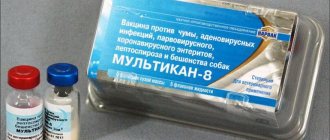Instructions for use KETOROL
Ketorol is intended for intramuscular injection; the drug should not be used for epidural or spinal administration. The solution is injected slowly IM (deep into the muscle). The onset of the analgesic effect is about 30 minutes with its maximum severity within 1-2 hours, the average duration of analgesia is 4-6 hours.
Administration of the drug several times a day for more than 2 days is not recommended, since in most cases patients do not require longer-term analgesic therapy, or can be switched to oral ketorolac. In this case, the duration of use of ketorolac parenterally and orally should not exceed 5 days in total.
To achieve maximum analgesic effect in the early postoperative period, it is possible to use ketorolac and narcotic analgesics together; the daily dose of the latter in this case is reduced. Ketorolac does not affect the addiction of copioids and does not increase the associated respiratory depression or sedation.
Dose selection and adjustment should be made in accordance with the intensity of pain and response to the drug. To minimize side effects, it is recommended to use the minimum effective dose for the shortest possible course of treatment.
Adults:
The usually recommended initial dose of Ketorol is 10-30 mg, followed by 10-30 mg every 4-6 hours. In the early postoperative period, it is permissible to administer the drug every 2 hours, if necessary. The maximum daily dose is 90 mg/day, in patients with body weight less than 50 kg - no more than 60 mg/day.
Elderly patients (over 65):
It is recommended to use the drug in a dose of 10-15 mg every 4-6 hours, the total dose should not exceed 60 mg/day. Due to the higher risk of side effects in this group of patients, the minimum possible duration of treatment and regular monitoring of the patient’s condition to exclude gastrointestinal bleeding are recommended.
Children:
The safety and effectiveness of ketorolac in children have not been confirmed; the drug is not recommended for use in children under 16 years of age.
Patients with impaired renal function:
the use of ketorolac is contraindicated in patients with severe and moderate renal impairment. In case of mild renal dysfunction, it is permissible to use Ketorol in a dose of no more than 60 mg/day.
If it is necessary to combine parenteral and oral administration of Ketorol, the total daily dose should not exceed 90 mg (60 mg in persons over 65 years of age, with a body weight of less than 50 kg or impaired renal function), while the dose of the drug taken orally should not exceed 40 mg/day . It is recommended to quickly transfer the patient only to the oral form of the drug.
Ketorol
Name: Ketorol Pharmacological action: Ketorol is a non-steroidal anti-inflammatory drug with a predominantly analgesic effect. The active ingredient of the drug is ketorolac (ketorolac tromethamine). Ketorolac has moderate antipyretic properties, an anti-inflammatory effect and a pronounced analgesic effect. Ketorolac, predominantly in peripheral tissues, causes indiscriminate inhibition of the activity of cyclooxygenase enzymes types 1 and 2, resulting in inhibition of prostaglandin formation. Prostaglandins play an important role in pain, inflammatory reactions and the mechanism of thermoregulation. According to the chemical structure, the active substance of Ketorol is a racemic mixture of +R- and -S- enantiomers, and the analgesic effect of the drug is due precisely to the -S-enantiomers. Ketorol does not affect opioid receptors, does not depress the respiratory center, does not have a sedative or antidepressant effect, and does not cause drug dependence. The analgesic effect of Ketorol is comparable in strength to morphine and is much more superior to non-steroidal anti-inflammatory drugs of other groups. The onset of analgesic action after intramuscular administration or oral administration begins after 0.5 and 1 hour, respectively. The maximum analgesic effect is observed after 1-2 hours.
Indications for use: For the relief of pain caused by any reason, with strong or moderate severity (including oncological pathology and pain in the period after surgical interventions).
Directions for use: Ketorol tablets are prescribed for oral administration. Depending on the severity and severity of pain, apply once or repeatedly in a dose of 10 mg (the maximum permissible dose is 4 tablets per day - 40 mg). The duration of 1 course of treatment is no more than 5 days.
Ketorol for intramuscular administration The minimum effective dose is individually selected, which depends on the patient’s therapeutic response and the intensity of the pain syndrome. If necessary, reduced doses of opioid analgesics can be prescribed in parallel. For people under 65 years of age, 10-30 mg of the drug is used intramuscularly once or repeatedly (every 4-6 hours) at 10-30 mg. For patients over 65 years old, as well as for those with impaired renal function, Ketorol is prescribed intramuscularly once 10-15 mg or repeatedly 10-15 mg every 4-6 hours, depending on the severity of the pain syndrome. The maximum permissible dose for patients under 65 years of age is 90 mg/day. In case of impaired renal function or age over 65 years, the maximum allowable dose is 60 mg/day. The course of therapy is no more than 5 days.
Switching from intramuscular to internal use On the day of switching, the dose of Ketorol for oral administration should not exceed 30 mg. The total daily dose of tablets and solution when switching from intramuscular administration to oral administration should be no more than 90 mg/day for patients 65 years of age or less, for patients with impaired renal function or age over 65 years - 60 mg/day.
Side effects: Gradation of side effects: more than 3% - frequent, 1-3% - less frequent; less than 1% are rare.
From the urinary system: lower back pain without or with azotemia and/or hematuria, acute renal failure, uremic hemolytic syndrome (renal failure, thrombocytopenia, hemolytic anemia, purpura), decreased or increased volume of urine excreted, renal edema, frequent urination, jade (rare).
From the digestive system: diarrhea and gastralgia, especially in patients over 65 years of age who have a history of erosive and ulcerative diseases of the gastrointestinal tract (often); flatulence, feeling of fullness in the stomach, constipation, stomatitis, vomiting (less often); erosive and ulcerative lesions of the gastrointestinal tract, including bleeding (burning or spasm in the epigastric region, abdominal pain, vomiting like “coffee grounds”, heartburn, melena, nausea) and perforation of the wall of the gastrointestinal tract, hepatitis, acute pancreatitis, cholestatic jaundice, hepatomegaly (rare).
From the central nervous system: headache, drowsiness, dizziness (often); depression, hallucinations, psychosis, ringing in the ears, hearing impairment, blurred vision (including blurred vision), hyperactivity (restlessness, mood changes), aseptic meningitis (severe headache, fever, stiff back and/or neck muscles, convulsions) - rarely.
From the respiratory system: laryngeal edema (difficulty breathing, shortness of breath), dyspnea or bronchospasm, rhinitis (rarely).
Allergic reactions: anaphylactoid reactions or anaphylaxis (skin rash, change in facial skin color, itching of the skin, urticaria, dyspnea or tachypnea, periorbital edema, swelling of the eyelids, difficulty breathing, shortness of breath, wheezing, heaviness in the chest) - rare. From the blood coagulation system: nosebleeds, bleeding from a postoperative wound, bleeding from the intestines (rare).
From the hematopoietic organs: eosinophilia, anemia, leukopenia (rare).
Skin reactions: purpura and skin rash, including maculopapular rash (less common); urticaria, exfoliative dermatitis (fever with or without chills, peeling or hardening of the skin, redness, tenderness and/or swelling of the tonsils), Lyell's syndrome, Stevens-Johnson syndrome (rare).
From the cardiovascular system: slight increase in blood pressure (less often); pulmonary edema, loss of consciousness (rare).
Local reactions when injected into a muscle: pain or burning at the injection site (less often).
Others: swelling of the legs, face, ankles, feet, fingers, weight gain (often); excessive sweating (less common); fever, swelling of the tongue, (rare).
Contraindications: • Aspirin triad; • angioedema; • bronchospasm; • hypersensitivity to tromethamine ketorolac and/or other NSAIDs; • hypovolemia, regardless of the cause of its development; • erosive and ulcerative diseases of the digestive system in the acute phase; • hypocoagulation (including cases of hemophilia); • dehydration; • peptic ulcers; • hemorrhagic stroke (suspected or confirmed); • combination with other NSAIDs; • renal and/or liver failure (if plasma creatinine is more than 50 mg/l); • hematopoietic disorders; • hemorrhagic diathesis; • pregnancy, childbirth, lactation; • high risk of bleeding (including postoperative); • age up to 16 years.
Pregnancy: Ketorol is contraindicated in pregnant women. If it is necessary to prescribe the drug during lactation, breastfeeding is temporarily stopped.
Interaction with other drugs: The combination of paracetamol and Ketorol increases the risk of toxic effects on renal tissue, with methotrexate it causes increased nephro- and hepatotoxicity. The simultaneous administration of ketorolac with calcium supplements, glucocorticosteroids, acetylsalicylic acid, non-steroidal anti-inflammatory drugs from other groups, corticotropin and ethanol can provoke ulceration in the gastrointestinal mucosa, which threatens the development of gastrointestinal bleeding. During the use of the drug, a decrease in the clearance of lithium and methotrexate and an increase in the toxicity of both of these substances may occur.
Concomitant use with indirect anticoagulants, thrombolytics, heparin, cefoperazone, antiplatelet agents, pentoxifylline and cefotetan increases the possible risk of bleeding. Ketorol reduces the effect of antihypertensive and diuretic drugs because it causes a decrease in the formation of prostaglandins in the kidneys. Probenecid reduces the volume of distribution and plasma clearance of Ketorol, increases its content in the blood serum and increases the half-life of ketorolac tromethamine. The combined use of methotrexate and ketorolac is possible only when prescribing small doses of methotrexate (in this case, it is necessary to carefully monitor the plasma concentration of methotrexate).
The absorption of ketorolac tromethamine is not affected by the use of antacids. Ketorol increases the plasma levels of nifedipine and verapamil. When used simultaneously with Ketorol, the hypoglycemic effect of oral hypoglycemic drugs and insulin increases, which requires a change in the dose of the latter. When prescribing the drug with other drugs that have nephrotoxic effects (including gold-containing drugs), the risk of nephrotoxicity increases. Drugs that inhibit tubular secretion reduce the clearance of ketorolac tromethamine and increase its concentration in the blood serum. When combining the drug with opioid analgesics, a significant reduction in the dosage of the latter is possible. The combined administration of sodium valproate and Ketorol leads to impaired platelet aggregation. Pharmaceutically, tromethamine ketorolac is incompatible with lithium preparations and tramadol solution.
You should not mix the solution for intramuscular administration of Ketorol in the same syringe with promethazine, morphine sulfate and hydroxyzine, as they interact chemically with precipitation. Solution for intramuscular administration of Ketorol is compatible with 5% dextrose solution, isotonic sodium chloride solution, plasmalit, lactated Ringer's solution and Ringer's solution, as well as with infusion solutions that include lidocaine hydrochloride, dopamine hydrochloride, aminophylline, heparin sodium salt and human insulin short action.
Overdose: Possible signs of Ketorol overdose: nausea, abdominal pain, vomiting, peptic ulcers or erosive lesions of the gastrointestinal tract, metabolic acidosis, impaired renal function. Treatment: gastric lavage followed by the administration of adsorbent drugs, symptomatic treatment. Not excreted to a significant extent by dialysis methods.
Release form: Ketorol tablets: round, green-coated, with the symbol “S” on 1 side, biconvex, containing 10 mg of ketorolac tromethamine. The fracture is white or almost white. There are 20 pieces in a package (10 pieces in each blister).
Ketorol is a solution for intramuscular administration in dark glass ampoules containing 1 ml of Ketorol (30 mg of ketorolac tromethamine). There are 10 ampoules in a blister.
Storage conditions: Store according to list B. The storage location should be dry and protected from light. Temperature – no higher than 25°C. Shelf life – 3 years. Protect from access by children. Prescription supplies from pharmacies.
Synonyms: Ketalgin, Dolak, Adolor, Ketorol, Ketanov, Ketorolac, Nato, Ketrodol, Torolak, Ketalgin, Toradol.
Composition: Ketorol tablets Active substance: tromethamine ketorolac. Inactive ingredients: lactose, microcrystalline cellulose, magnesium stearate, colloidal silicon dioxide, corn starch, hypromellose, sodium starch glycolate, titanium dioxide, propylene glycol, dye - olive green.
Ketorol solution for intramuscular administration Active substance: tromethamine ketorolac. Inactive substances: ethanol, sodium chloride, octoxynol, disodium edetate, sodium hydroxide, propylene glycol, water for injection.
Additionally: It is not recommended to prescribe Ketorol as a component for premedication, anesthesia in obstetric practice and maintenance anesthesia due to the significant risk of bleeding. Not indicated in the treatment of chronic pain syndrome. The effect of the active substance Ketorol on platelet aggregation is observed for 1-2 days. For patients with disorders of the blood coagulation system, ketorolac is prescribed if constant monitoring of the platelet count is carried out - this is especially important when reliable hemostasis is necessary (postoperative period). Prescribe with caution in cholecystitis, bronchial asthma, arterial hypertension, chronic heart failure, renal dysfunction (with serum creatinine less than 50 mg/l), active hepatitis, cholestasis, systemic lupus erythematosus, sepsis, polypous growths in the nasopharynx and nasal mucosa , elderly patients over 65 years of age.
The risk of developing side effects from the urinary system increases with hypovolemia. Ketorol, if necessary, can be used in combination with opioid analgesics. Ketorol is not recommended to be taken simultaneously with paracetamol for more than 5 days. When using Ketorol, a significant number of patients develop side effects from the central nervous system (for example, drowsiness, headache, dizziness), so it is better to avoid performing activities that require quick reactions and increased attention (working with machinery, driving vehicles).
Attention! The description of the drug " Ketorol " on this page is a simplified and expanded version of the official instructions for use. Before purchasing or using the drug, you should consult your doctor and read the instructions approved by the manufacturer. Information about the drug is provided for informational purposes only and should not be used as a guide to self-medication. Only a doctor can decide to prescribe the drug, as well as determine the dose and methods of its use.




